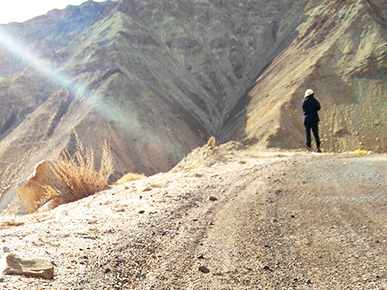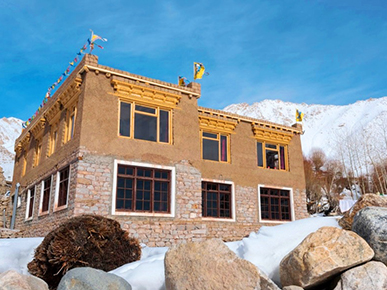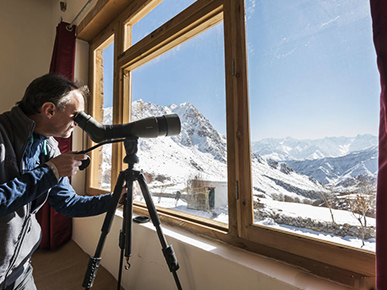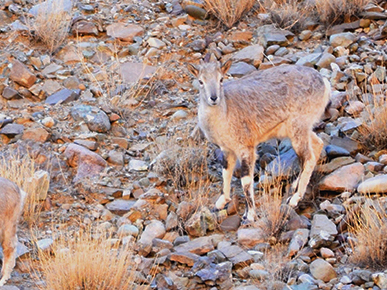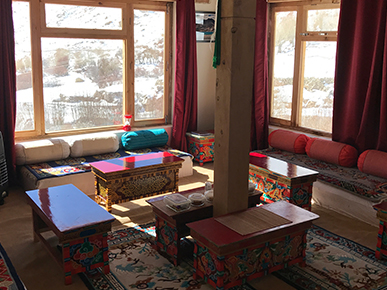Observing the endangered Himalayan wildlife in Ladakh, in winters!
I recently had an opportunity to visit Ladakh at the onset of winters, along with a few friends from the travel industry, to checkout one of the first dedicated ‘Wilderness Lodge’ in the region, situated high up in Ulley Village at an altitude of 13000 feet above sea level. The aim was not just to do site inspection of the ‘Wilderness Lodge’ but also to experience observing wildlife in the Himalayas and understand how difficult or easy it is to stay in Ladakh in the winters. As always, whenever one arrives in Leh by air it advised to acclimatize for atleast 2 days before starting on a new journey in Ladakh. You are supposed to do nothing but eat, sleep and rest. The physical activity can start if you have not experienced uneasiness within 24 hours of your arrival in Leh. We too followed the instructions and proceeded to stay at Snow Leopard Lodge located high up in the mountains on the third day of our arrival into Leh.
To reach Ulley Village we drove on the Highway to Srinagar headed westwards which follows the twists and turns of the Indus River passing through many vantage points. One such stopover was on the outskirts of Nimmu town with a view of the ‘sangam’ where deep blue waters of Zanskar River meet the muddy waters of Indus River. Driving further we headed north on a road marked to Likir – one of Ladakh’s famous Buddhist monasteries where the landscape is vastly spread-out making you feel like a dwarf. Quickly we hit a dirt road winding up a narrow valley following a rivulet called the Ulley Chhu. From here our guides suddenly came into action scanning the hill sides and the skyline for any silhouette which could give us the first sighting of the magnificent wildlife of Ladakh. This is the incredible Ibex country where one can often see a magnificently horned male Ibex standing vigil on some impossibly narrow outcropping, a few thousand feet over a plunging cliff. Eventually we reached Ulley village, a remote hamlet of about 7 houses scattered on a hillside beyond which are the high summer pastures of the Yak and Dzo. This area is being developed exclusively for tracking the endangered Himalayan wildlife such as Ibex, Urial, Himalayan fox, Bearded Himalayan griffon vultures, Golden eagles and snow leopard.
Snow Leopard Lodge commands an excellent view of the rugged mountainous landscape it is surrounded with. The Lodge’s location enables one to view wildlife right from the windows of its cosy rooms. There are 5 Bedrooms with 2 shared bathrooms in the main Lodge and 4 bedrooms with attached bathrooms in the Annexe which is about 100 meters away from the Main Lodge. The facilities here may seem ‘basic’ otherwise but would not be less than ‘luxuries’ in this high-altitude remote location. For example ‘hot water buckets for morning ablutions’ (running hot and cold water is not available here in winters); Gas-cylinder heaters in the rooms (usable only till the time you are awake in your room) and an excellent Cafeteria stocked with assortment of coffees, teas, snacks that helps in surviving in subarctic like climatic conditions with temperature sometimes dipping to -20° C (-4° F) at night. The Lodge employs local residents as ‘Wildlife Spotters & Trackers’ who take up positions on specifically chosen vantage points every morning scanning the ridges, rocks and trails from multiple angles using high powered telescopes for any wildlife in sight. This information is then relayed to the Lodge through walkie talkie sets giving the Team a clear picture of the movement of wildlife on a given day. Apart from a direct team, the Lodge also works with contacts in the nearby villages to make sure there is enough information to make a wise decision regarding suggesting a schedule of wildlife activities to the guests for the day. There are a couple of SUVs also available at disposal, to travel swiftly to the place where a ‘sighting’ is underway.
During my stay at Snow Leopard Lodge I was fortunate to spot Ibex (a wild mountain goat), Bharal (Himalayan blue sheep), Urial (another group of the wild sheep), the Himalayan wild Yak, Pika (a mouse-hare) and Marmot (a big squirrel). I was told that sometimes one can even spot Himalayan Tahr (another type of mountain goat), Red Fox and the world famous Snow Leopard leaping nearby. Interesting bird life is also a highlight of this place – using field binoculars I could identify the Golden Eagle, Lammergeyer (a bearded vulture) soaring high in the sky. Other birds like Tibetan partridge, Chukor partridge, Horned Lark, Bar–headed goose, black-necked crane and Wall creeper were easier to spot since they were flying at lower heights.
My concluding thought is that Snow Leopard Lodge is definitely the place to be during winters in Ladakh to enjoy observing the endangered Himalayan wildlife from close quarters.
